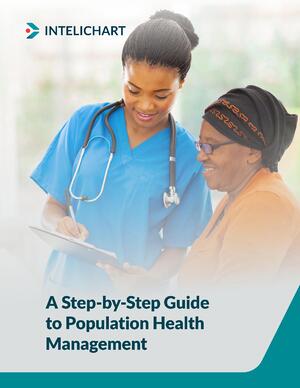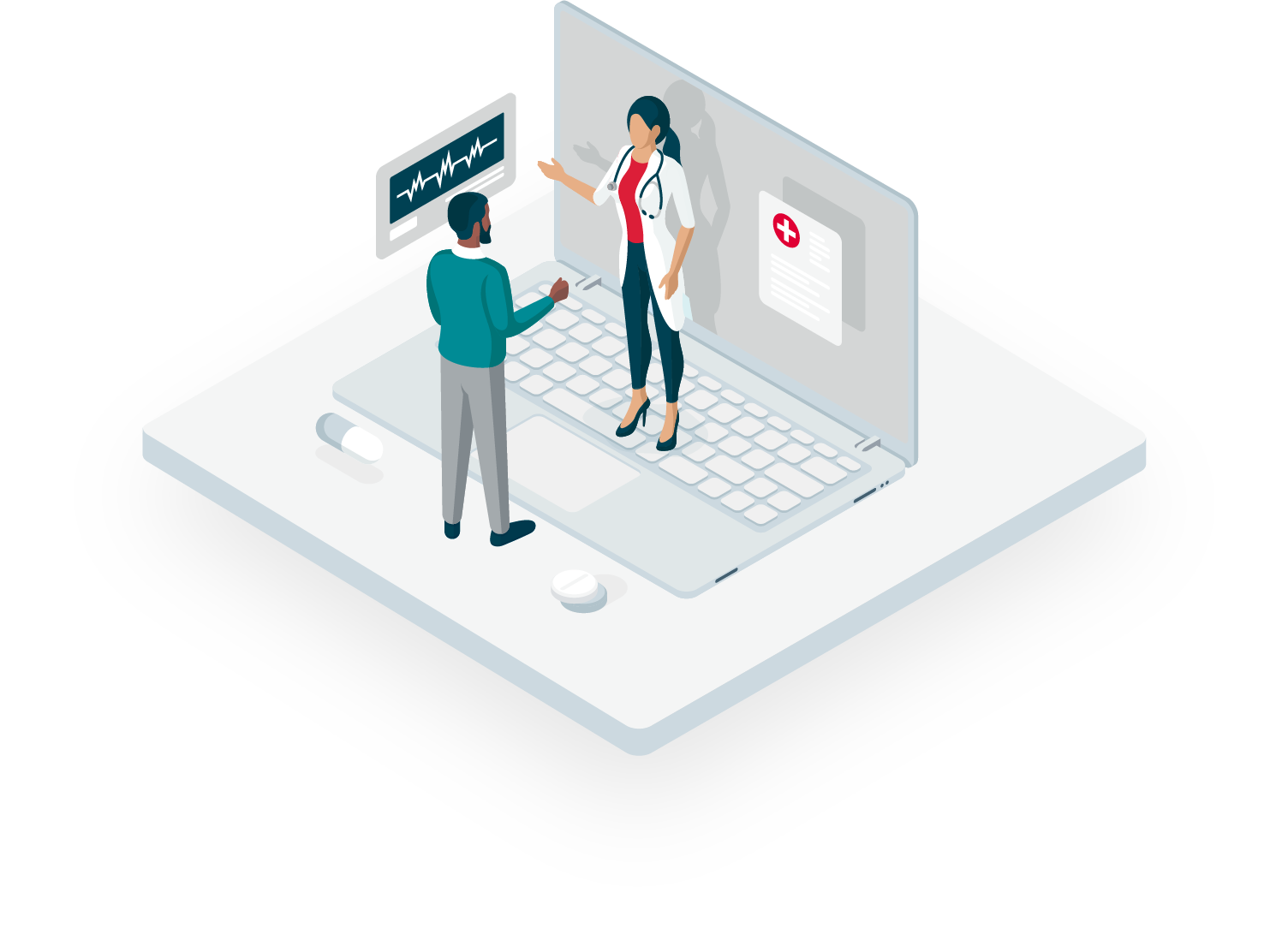Chapter 4
The Role Data Plays in Successful Population Health Initiatives
In the past, managing complex patient populations with both chronic conditions and challenging social determinants of health was labor-intensive, if not impossible. This was largely due to lack of available data and tools for providers.
Despite these challenging historical issues, newly available PHM technologies and enterprise-wide integrations of data systems have leveled the playing field.
The Advantage of Centralized Data
Centralized databases combined with intelligent, automated tools help care managers monitor high-risk patients in ways that were inconceivable 20 years ago. Thanks to access to numerous other commercial and consumer databases, care managers within integrated healthcare organizations can now track patient behaviors in near real-time, both across the care continuum and in between visits.
This comprehensive care perspective enables timely interventions, which is crucial—particularly among the five percent of the population that account for an estimated 50 percent of healthcare spending. Preventive interventions can divert patients from high-cost ED visits that may lead to an even costlier, and potentially unnecessary, hospital admission, and the associated inpatient care.
The Power of Automation and Metrics
Even with automated patient data capture and analytics, PHM can still be labor-intensive, with manual report creation, data searching, and patient outreach. Sophisticated PHM platforms, however, are taking automation a step further by instantly generating dashboards showing performance on key metrics.
Platforms are also automatically initiating patient outreach through text, phone, or secure patient-portal messages based on predetermined criteria and patient preference from the care manager or healthcare organization. Automated communication from the healthcare organization is designed to remind, notify, or encourage patients to adhere to their care plan and take positive action.
The goal is the same: to modify behaviors and overcome social determinants of health that are driving them away from optimal outcomes. Readily available access to real-time data ensures automated interventions and communication are more relevant, effective, and focused on prevention.
%20(1).jpg?width=750&name=GettyImages-1252881116%20(1)%20(1).jpg)
The Key: Current, Comprehensive Data
That said, data analytics capabilities of a PHM platform are only beneficial to providers if the data is as current, comprehensive, and aggregated as possible.
Up-to-date, real-time data captured throughout the care continuum enables clinicians to identify potential adverse health events sooner across large populations of patients, ultimately preventing an unnecessary ED visit or hospital admission. Patients can also receive chronic condition management, recovery support, and education during ideal, teachable moments.
These factors are crucial for succeeding under the value-based care models. It may sound time-consuming and complex to access and analyze these huge amounts of timely data, but with the right processes and technology, healthcare organizations can save significant time and effort that they are currently expanding on PHM.
Shifting the Focus to Prevention
The importance of timely data for PHM interventions cannot be overstated. Avoidable readmissions not only contribute to overall costs, but healthcare organizations can also be penalized as much as 3 percent of their Medicare payments for these events under the Centers for Medicare and Medicaid Services' Hospital Readmission Reduction Program (HRRP). Under the program, hospitals bear a penalty if patients with certain conditions are readmitted within 30 days and the cause of readmission was determined to be avoidable.
Keeping HRRP-patients, or any high-risk population, out of the hospital requires integrated access to data aggregated from multiple outpatient facilities where the patient receives post-discharge care. Also included would be pharmacy data to ensure prescriptions are being filled, and documentation from home-health providers to track a patient's recovery and/or chronic condition management.
Capturing, aggregating, and analyzing all of this comprehensive data can seem like a massive, time-consuming effort. However, sophisticated and integrated PHM technology is available that automatically aggregates, analyzes, and presents data from different providers and organizations as it is captured.
It also alerts care managers and other clinicians to follow up with recently discharged patients, and it gathers information through automated, mobile-based surveys. Additionally, these systems can inquire why appointments were missed through text messages, portal messages, interactive voice response phone calls, or whichever method the patient or provider prefers.
Timely interventions can be delivered in a fraction of the time of manual data searching, phone calls, and waiting for responses. Most importantly, patients receive the support, education, and resources to stay adherent to care plans rather than returning to the hospital.

%20(1).jpg?width=750&name=GettyImages-1220238858%20(1)%20(1).jpg)


%20(1)%20(1).jpg?width=750&name=GettyImages-1215506314%20(1)%20(1)%20(1).jpg)
%20(1).jpg?width=750&name=GettyImages-1252881116%20(1)%20(1).jpg)
%20(1).jpg?width=750&name=GettyImages-1214753465%20(1)%20(1).jpg)
%20(1).jpg?width=750&name=GettyImages-832597660%20(1)%20(1).jpg)

